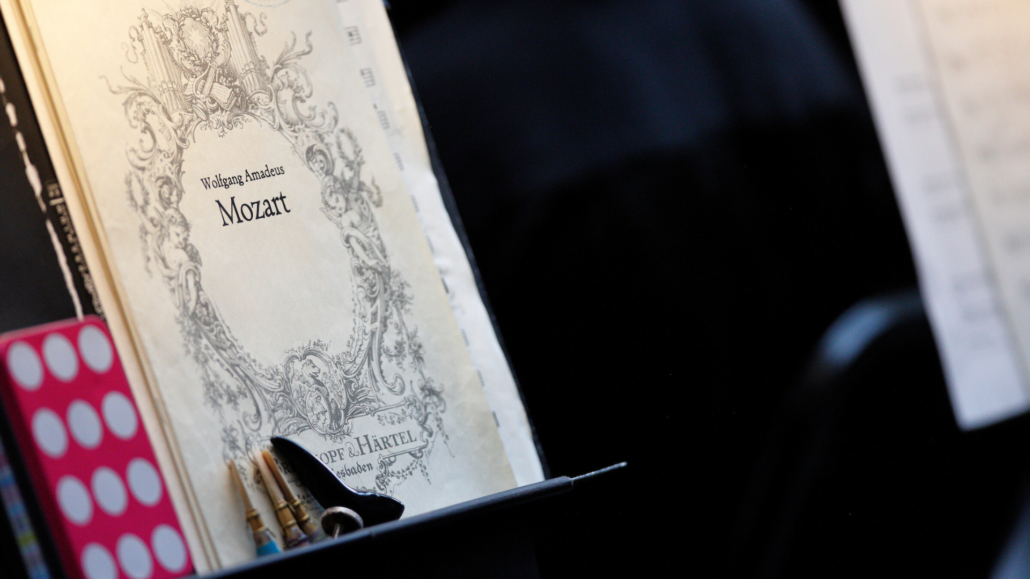KLUXEN – MOZART & BARTÓK
An ongoing theme in the Victoria Symphony’s 2024-25 season—and, indeed, since Christian Kluxen’s arrival as music director in 2017—is the way that different approaches to music can talk to each other across the ages. Music is the universal language, after all, and by placing thoroughly modern music in close proximity to the thoroughly modern music of a few centuries before, insights into both can be obtained.
On the most superficial level, though, this program’s pairing of Wolfgang Amadeus Mozart and Béla Bartók might seem designed to baffle even the most accomplished translator. What do Mozart’s Serenade No. 10 and Bartók’s Music for Strings, Percussion and Celesta have to say to each other? One was written midway through the Classical era in music, at a time when Louis XVI still sat on the French throne, and the other in the turbulent 1930s, shortly before the Nazi blitzkrieg tore apart Europe’s veneer of civilization. One is fanciful and lighthearted, the other full of portents and dissonances. One relies exclusively on wind instruments (including basset horns and contrabassoon), the other is mostly strings, with raucous timpani, percussion, harp, piano, and a chiming celeste. One incorporates lively dance music, the other a marche funèbre.
If through some miracle we could get Mozart and Bartók to sit down together over coffee and Viennoiserie, what could they possibly say to each other?
Quite a lot, it turns out—although the dialect they’d speak would likely be that other universal language, math.
The scribbled calculations found in the margins of many Mozart manuscript scores indicate that the Salzburg genius was interested in expressing mathematical relationships through music, and that his researches extended far beyond the circle of fifths or the stacking of fourths. Furthermore, as a Freemason, Mozart would have been well aware of the Fibonacci sequence, an algorithm in which every number is the sum of the two preceding integers. This relates closely to the golden ratio, a system of proportionality that in architecture (or lower-case masonry, for that matter) is intrinsically pleasing to the eye and in music to the ear. Although we cannot guarantee that this applies specifically to the Serenade No. 10, it is entirely likely that Mozart did amuse himself with such concerns during its composition.
Bartók, on the other hand, makes explicit use of Leonardo “Fibonacci” Bonacci’s theorem in Music for Strings, Percussion, and Celesta. Following the “wild and furious dance” of the work’s second movement—a kind of “folk music on speed”, as Kluxen points out—the composer introduces a motif that gradually expands in an undeniably Fibonacci-esque manner. This, Kluxen adds, conveys “an eerie sense of urgency, as if the listener is walking through a forest in the middle of the night, hearing strange unknown sounds from all sides”.
In this darkened, unfamiliar world, all certainty is lost, Kluxen continues, without needing to make the obvious connection between the present moment and 1937, when Music for Strings, Percussion and Celesta received its premiere. But perhaps there is consolation in nature—and in the Fibonacci numbers that take concrete form in the whorls of Bartók’s beloved sunflowers and the swirling murmurations of Mozart’s neighbourhood starlings. “Bartók was a committed anti-fascist and an atheist,” Kluxen explains. “Maybe he is telling us that we should base our existence on nature’s patterns, where real beauty emerges from a perfect balance between coincidence and complexity.”
Bartók is on record as saying as much. “We follow nature in composition,” the pioneering ethnomusicologist wrote in his groundbreaking 1925 treatise, At the Sources of Folk Music. “Folk music is a phenomenon of nature. Its formations developed as spontaneously as other living natural organisms: the flowers, animals, etc.”
In our imaginary café, Mozart’s pet starling can be heard chirping in agreement, as our two composers shake hands and fade back into their past eras. Lucky us, that through music we can live in both!
Notes by Alex Varty



 Christian Kluxen, conductor
Christian Kluxen, conductor